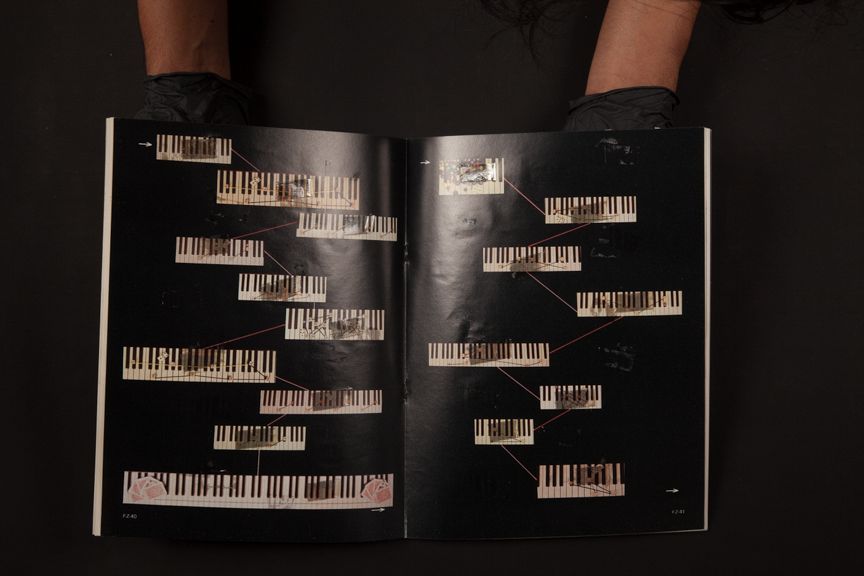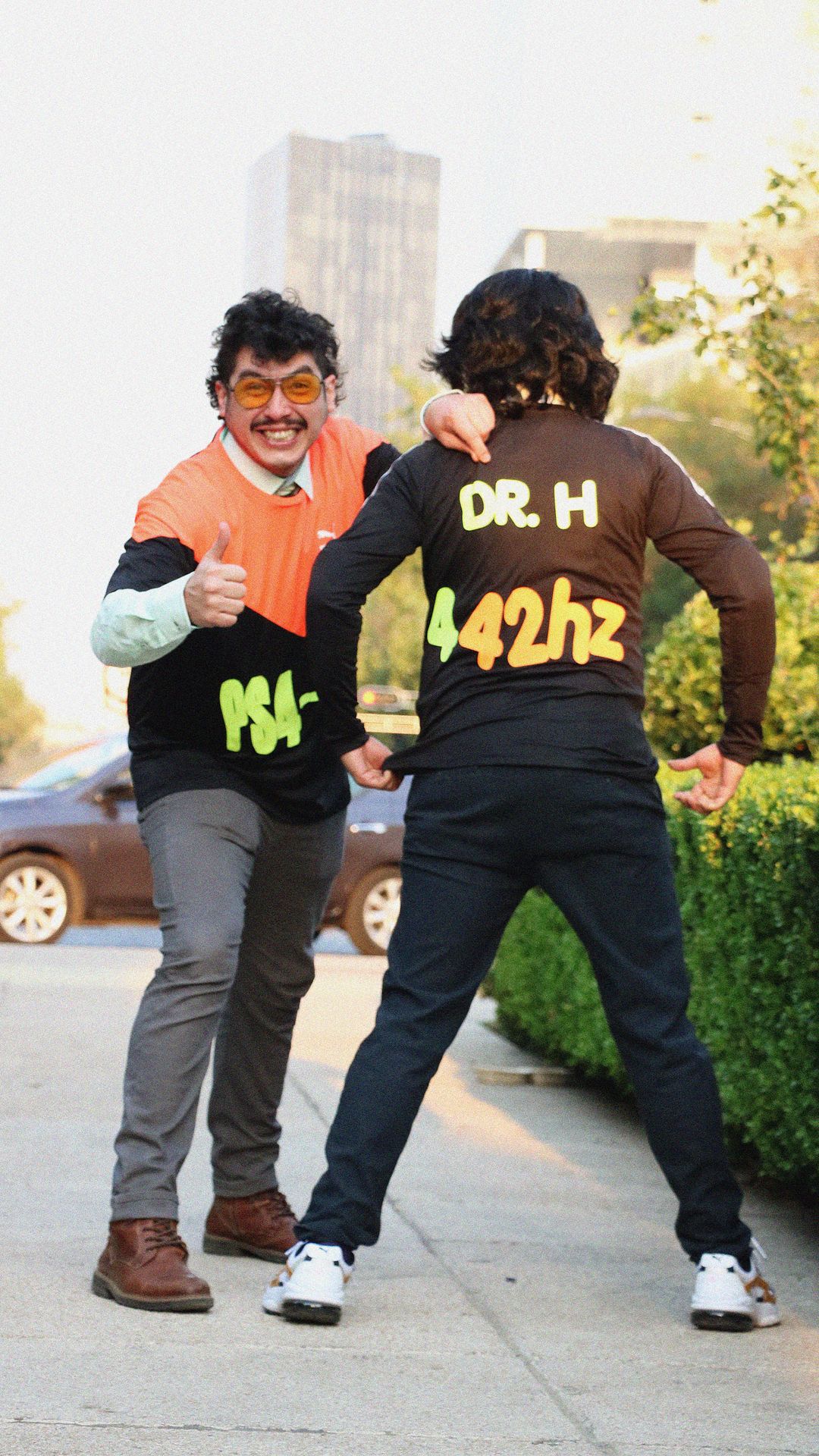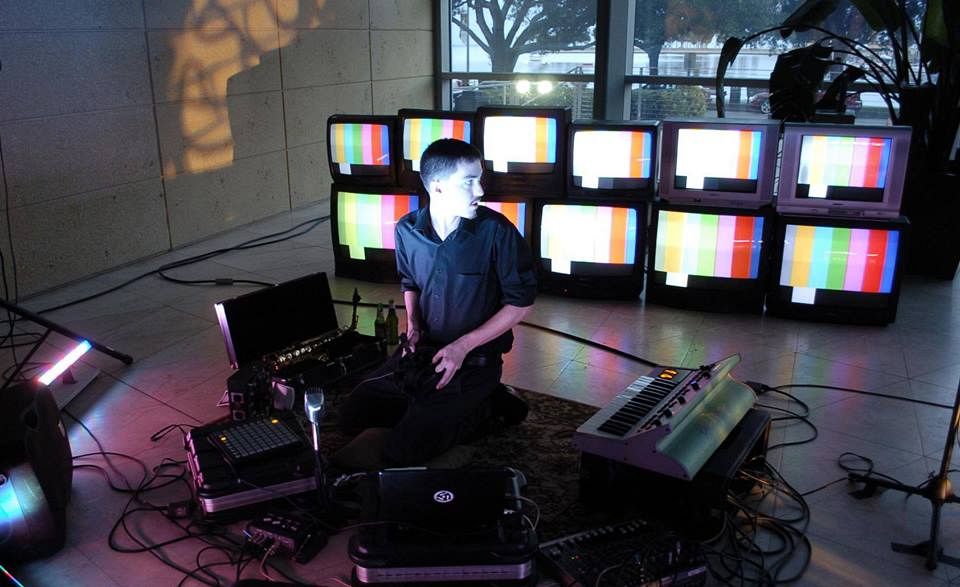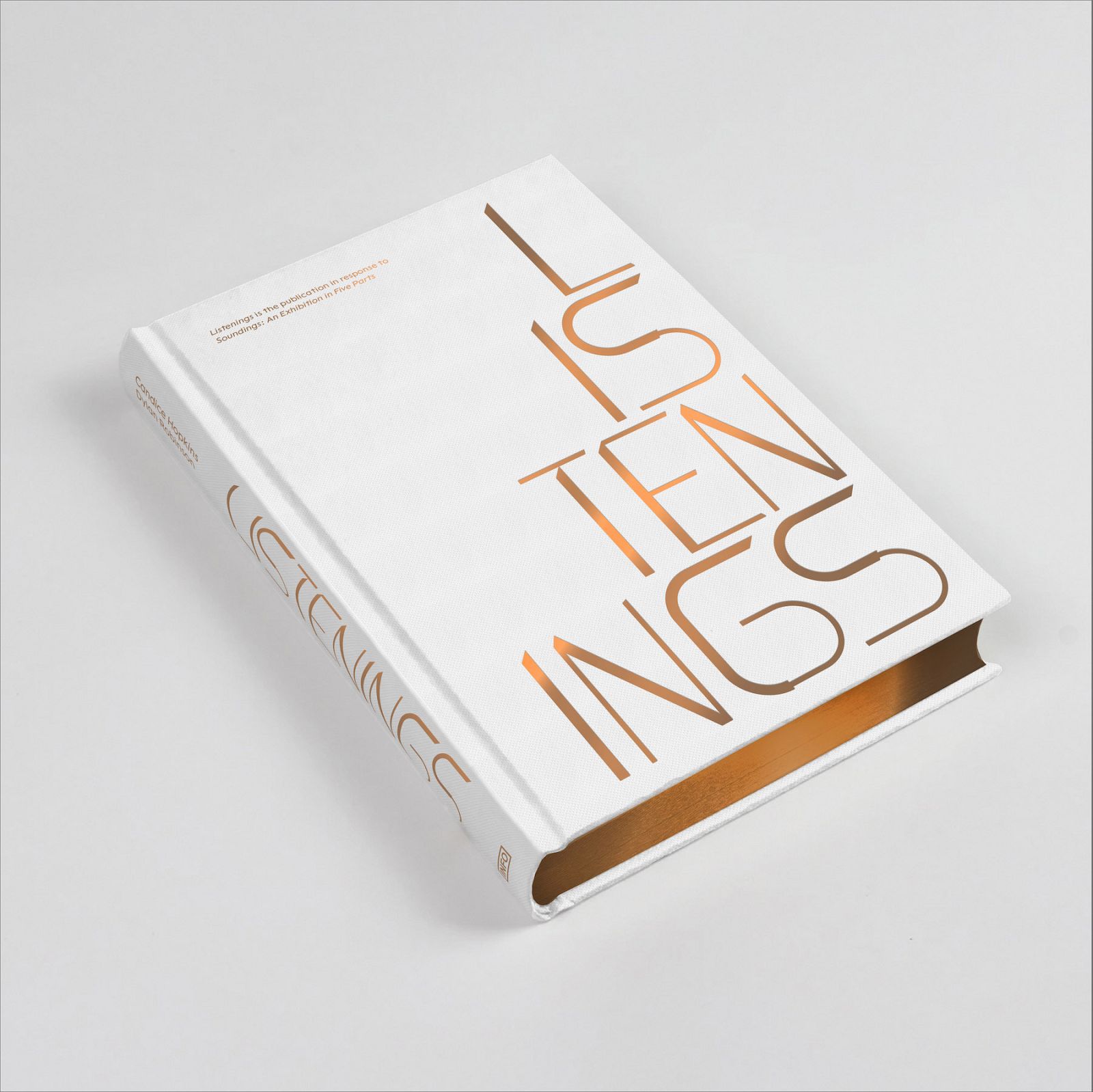As part of ICI's Intensives in Action series, Curatorial Intensive alum Rolando Hernández offered a look inside his Social Sound Sculpture series. During the 2018 Curatorial Intensive in Mexico City, Hernández developed a project from CCADDASM (Centro de Creación Archivo y Difusión de Documentos de Arte Sonoro en México), a branch of his curatorial and research practice that seeks to create an alternative historiography of sound practices in Mexico. Here, he discusses some of the major projects that have comprised his work on Social Sound Sculptures, and presents some of the archival materials that inform his practice.
Intensives In Action: Rolando Hernández

Yaa´Ñu´u Tikue´e Festival - Yutindudi (2023). (Photo: Héctor Ramírez)
The Social Sound Sculpture series
On Aug 29, 2024
About Social Sound Sculptures
The Social Sound Sculptures series thinks of curatorship and research as an art form, creating critical curatorial devices that reflect on sound production while being always open to its social and political dimensions. The Social Sound Sculptures take inspiration from the countercultural dimension of Ivan Illich's concept of Learning Networks: A twofold zone containing multiple parties and casual, intimate meetings that become knowledge management devices, as well as places like the canteen, the open patio, and the activist, anarchic, contextual, performative, sociopolitical, and museographic dimension of the archive. We look for models that focus on learning through communality, as well as artistic and pedagogical models that are open to social creativity.
Field research is a crucial part of the creation process, helping to comprehend the background and context where a sculpture might be created. Just like sculptors need to look for specific materials and master their possibilities, social sculptors need to find cracks and veins within certain contexts in order to be able to act within their social plasticity. For example, many of the Social Sound Sculptures I have developed in recent years were based on artistic agencies—such as that of the manager, editor, archivist, or collector—with a notion that carrying out any of these activities communally pushes the writing of artistic practices. Considering these agencies that make up an artistic community, we realize not only that art is history in writing, but that others, in addition to artists, have the right and the possibility of writing history. The possibility of opening creation to diverse social bodies is already a foundation for a sculpture.
In light of what can provide an artistic aura to the daily practice of archiving, editing, collecting, managing, or curating, we can find critical perspectives that explain the value of these projects in economic, cultural, and socio-political terms. Many times, the projects of Social Sound Sculptures are not legible in institutional or economic terms, and may be seen as commercial and economic failures. However, Social Sound Sculptures choose to do things that create incisions in institutional spaces in order to take the writing of history into our hands.
Projects
As of 2024, the Social Sound Sculpture series includes the projects described below.
Umbral (2013-2021)
Umbral was an artist-run space and festival with activities between Mexico City and Oaxaca City, trying to map contemporary sound practices. It had three different lines of action: The first was a research project involving young artists who had never played live before. We sought to invite them to perform Umbral's first concert, which led us to different schools of art and music, different workshops, and other venues in Mexico City and Oaxaca. Second, we conducted research on artists in Mexico who had created the basis for experimental music and sound art in the country—such as Carlos Alvarado, one of the pioneers of Mexican synthesizer music, or foundational sound sculpture artist Vicente Rojo Cama. Lastly, we invited singular voices from the international scene of experimental music, seeking to interweave generations and nationalities. This project sought to invert, and show as false, the idea that Mexico was left behind a decade ago by the present experimentations in sound.
Hyperstitious Transmissions from Mx City
This project began as a commission by Setzkasten (Vienna) for the 20th anniversary of klingt.org, one of the most relevant experimental music organizations in Central Europe. The resulting selection presents historical sound art projects from Mexico, including historical figures such as Melquiades Herrera—the godfather of performance in Mexico—and Música de Cámara, a group mixing photography, music, and poetry in its performances. It also places their work alongside current experimental artists such as Elena Solís, Daniela Solís, and Carmen Ixchel Maya.
CCADDASM (2015-2023)
CCADDASM is an artistic institution founded in 2015 with the intention of creating an alternate historiography of sound practices in Mexico. It started with a focus on sound art in the 20th century, but the research broadened to include prehispanic sound objects, cosmoauditions of originary towns, etc. CCADDASM has been working with several documentation centers, private collections, and artists to recreate historical performances, to catalog and digitize archives, and to build an oral history of sound practices in Mexico. All of the public presentations of this archive happened through performative exhibitions in which the archive was deployed to show different axes of Mexico's sound practices.

Música Electroacústica Mexicana. Courtesy of Colección Hispanomexicana de Música Contemporánea.

Foto Zoom: A Magazine for Photography and Visual Arts. Special Edition about Música de Cámara.

Josep Lluís Berenguer, COMIC. From La Nueva Escritura, edited by Euskal Bidea.
Imagínate Todo Aquello Que No Podrías Imaginarte Nunca (Imagine what you could never imagine)
The CCADDASM research project Imagine what you could never imagine deals with the social relations behind the birth of what today is known as sound art and experimental music in Mexico. It takes as a starting point the research, cataloging, and digitization of the archives of Ángel Cosmos, a Spanish artist who was part of the experimental community in Mexico during the 1980s, and who created the first sound art exhibition in Mexico at the Museum of Modern Art in 1984 in collaboration with Antonio Russek. We are currently seeking funds to finish this documentary.
This project was singular on its own because when I arrived to Centro de la Imagen to ask about Ángel Cosmos' archive, there was no cataloging or even a legal entry of the archive into their collection. This was due to Cosmos' sudden death and the attempts of friends to preserve, at any cost, the memory of this artist. I had the privilege of doing all the processes of archiving over nine months. Then, with the help of LLEOM (Laboratorio de Literaturas Extendidas y Otras Materialidades) we moved the archive from Centro de la Imagen to Laboratorio Arte Alameda—another of Mexico City's important museums—to show the archive for the first time in public. At that time the history of Ángel Cosmos was finally told.
PS4-MX
PS4-MX is a radionovela about sound practices in Mexico, produced in collaboration with Carlos Edelmiro presented by Radio Caso & Radio TSONAMI. A virtual exhibition is hosted currently by Q Galería from Universidad de San Francisco de Quito, Ecuador.





Yutindudi (2021-present)
Yutindudi is an organization that, since 2021, has been thinking of curatorship and research as a way of art. The project is based in the middle of La Mixteca Alta Oaxaqueña, three hours away from Mexico City, in the house of my grandmother and grandfather. During the first two years of the project, we remained as a private organization, trying to think about more ethical ways of creating organic bonds with the community where the project is based. Nowadays, we—Stephanie Janaina, Clara Guzmán González, Carlos Edelmiro, Taketina, Aurora Muñoz Espino, Juan Pablo Villegas, and Rocky and Rolando Hernández—hold two main events. "Yuzachiza Meetings" are an experimental laboratory of residencies, and in 2023, we started Yaa Ñu´u Tikue´e, a festival to create bonds within the community through microsocial actions.

Yaa´Ñu´u Tikue´e Festival - Yutindudi (2023). (Photo: Héctor Ramírez)
Trailer: A Square of Red Earth Moving
This documentary shows the first two Yuzachiza Meetings that took place in 2021 and 2022. In these experimental laboratories, we invite a group of artists for a week-long residency to talk, walk, eat and, if they wish to, present a reflection or their practice. This documentary was presented at Errant Sound (Berlin) and at the Poesía en Voz Alta festival at Casa del Lago UNAM, both in 2023. Yutindudi is funded by Other People, an organization to which we are forever grateful for their trust in this project.
Chintete (2023-present)
Chintete tries to mediate rural and countercultural ways of life by organizing public programs that encompass contemporary and traditional dance, experimental music, poetry, and gastronomy, among other immaterial experiences like parties or talks. We follow the Viku Ñu, one of the philosophical concepts of the Mixtec region which translates as "The Party as Obligation." This concept shows how, through parties, we can create spaces of social distension and conflict resolution.

Chintete Jalatlaco, Chintete 2023. (Photo: Héctor Ramírez)
Current projects
I am engaged in two Social Sound Sculptures in progress. Cocina Hierbasanta is a project led by my mother, Clara Guzmán González, in which we create different projects with the recipes she has collected throughout her life. The second, Chachacual, is a nomadic gallery in which, since 2023, we try to show processes that sometimes remain invisible to the public eye. We showcase artists whose processes have an orientation toward immateriality, like those who cook, teach, or organize concerts.
Intensives in Action programs showcase how alumni of our flagship professional development program, the Curatorial Intensive, have brought their Intensive proposals to life. The Curatorial Intensive has, since 2010, taken place in more than 25 cities around the world and engaged almost 500 international curators. During the program, participants develop proposals for exhibitions, research, programs, or other projects through intensive study, with the guidance of international mentors, and in conversation with a cohort of peers.
Encompassing tours, texts, talks, and other content, Intensives in Action programming highlights the work and process of Curatorial Intensive alumni through the lens of these proposals, the projects they become, and the many dynamic career trajectories they shape.
Rolando Hernández is an artist living between CDMX and Oaxaca City.







